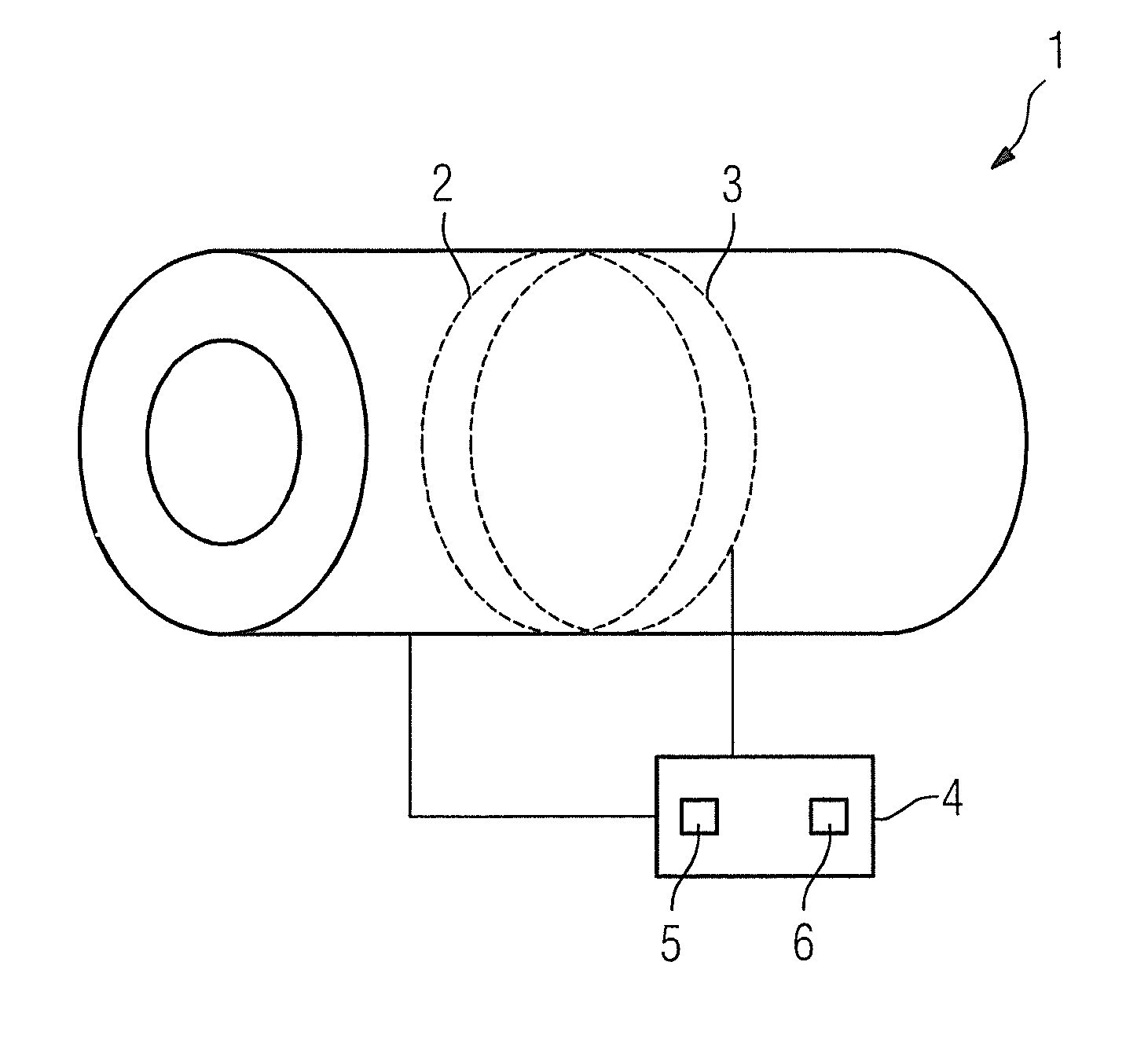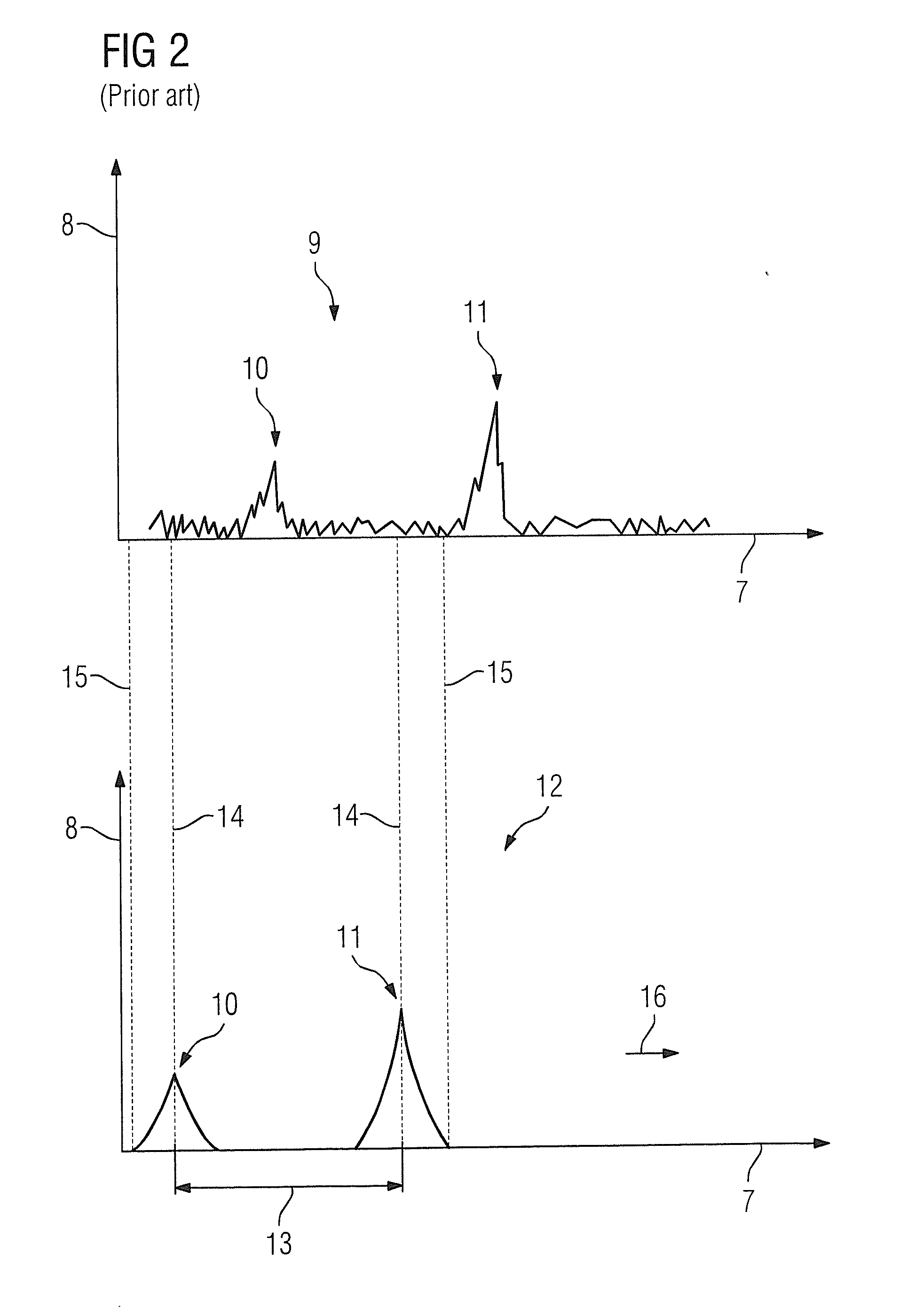Method and apparatus for automated determination of the resonance frequencies of protons for magnetic resonance examinations
a technology of magnetic resonance and resonance frequency, applied in the direction of reradiation, measurement using nmr, instruments, etc., can solve the problems of only reaching a particular and purely numerical value of cross-correlation coefficient, and achieve the effect of less error-pron
- Summary
- Abstract
- Description
- Claims
- Application Information
AI Technical Summary
Benefits of technology
Problems solved by technology
Method used
Image
Examples
Embodiment Construction
[0038]FIG. 1 shows a magnetic resonance system 1 with two radio-frequency (RF) coils 2 and 3 and a control device 4. A shim adjustment unit 5 and a frequency adjustment unit 6 are provided in the control device 4. The shim adjustment unit 5 and the frequency adjustment unit 6 are components of the magnetic resonance system 1 for automated setting of operating parameters, specifically the shim currents and the transmission frequency. If the transmission frequency and the resonance frequency of the nuclei under investigation do not match, significant signal losses arise. The determination of the exact resonance frequency therefore serves for the setting of the transmission frequency, in this case, of the radio-frequency coil 2.
[0039]The radio-frequency coil 2 is an excitation coil and the radio-frequency coil 3 is a detection coil. The radio-frequency coil 3 is adapted to specific portions of the test object, for example as a “head coil”, a “chest coil” or a “knee coil”. The radio-fre...
PUM
 Login to View More
Login to View More Abstract
Description
Claims
Application Information
 Login to View More
Login to View More - R&D
- Intellectual Property
- Life Sciences
- Materials
- Tech Scout
- Unparalleled Data Quality
- Higher Quality Content
- 60% Fewer Hallucinations
Browse by: Latest US Patents, China's latest patents, Technical Efficacy Thesaurus, Application Domain, Technology Topic, Popular Technical Reports.
© 2025 PatSnap. All rights reserved.Legal|Privacy policy|Modern Slavery Act Transparency Statement|Sitemap|About US| Contact US: help@patsnap.com



